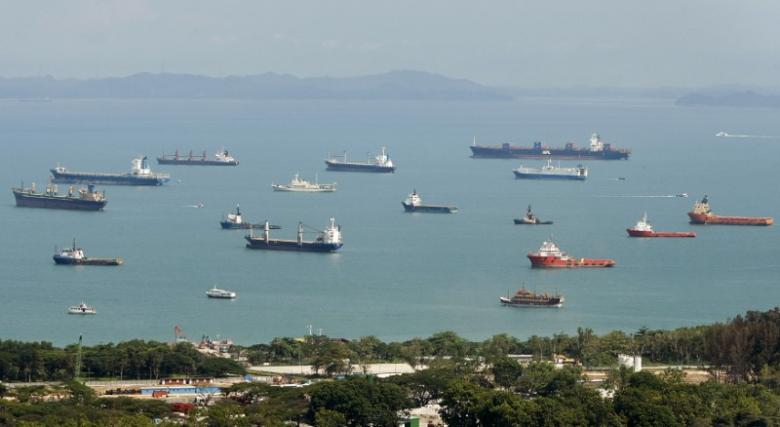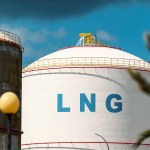Norway’s Telenor Maritime is at the forefront when it comes to global maritime communications, and has successfully pioneered a new way of providing digitalisation as a service on board vessels. Chief Executive Officer Lars Erik Lunøe and Chief Technology Innovation Officer Knut Fjellheim reveal more about this exciting development ahead of a special demonstration at Nor-Shipping 2023.
‘This is a completely new way of thinking to anything you have seen or heard of before,’ says Fjellheim, referring to the ideas that brought the company’s unique Unified Hosting Service™ to reality and fully operational across Color Line’s fleet of ferries in northern Europe.
‘The shipping industry today has been told they have to collect data and transfer that data to the cloud. But that is not sustainable according to the green shift, and not sustainable in the long run. Just collecting raw data does not give value for the ship owner,’ says Fjellheim.
‘We are making a digital ecosystem, we are bringing the cloud down to each individual ship as part of a new digitalisation as a service platform,’ he explains. ‘You need to take care of the data gathered from around the ship on the ship first.’
Efficient and secure
Suppliers and third-party vendors are increasingly adding to the demands on ship owners as more and more raw data is being gathered on board. This data is mostly collected as silos of information that must be sent to shore separately for processing, analysis and storage.
This current method is loading an unsustainable demand on ship owners as there will not be enough space for each vendor to put their own server on board, plus there are demands for more and more bandwidth. There are also serious security issues with so much data circulating across multiple remote access lines involving potentially several different third-party vendors.
Lunøe points to the fact that many ship owners are currently concerned they have no control over what stakeholders on board their vessels are doing when it comes to digitalisation.
‘Ship owners are simply pushed to install a solution per system, they have no control, so they are worried about cybersecurity,’ says Lunøe.
‘Remote access is a top topic today and questions from ship owners include who is connecting to my vessel right now. Ship owners and captains have a big concern. Everyone knows we need to go in the direction of digitalisation, but how to do it?
‘We have done the opposite of traditional mobile networks at Telenor Maritime, so the ship becomes the station, and then the harbour is roaming into the ship’s private network instead of the other way around,’ explains Lunøe. ‘So the processing and analysing of data can be done on board, rather than on shore.’
Cutting-edge applications
Telenor Maritime’s unique Unified Hosting Service™ is designed to enable remote operations and it eases compliance with environmental regulations. Its edge-processing set-up, where it standardises and aligns data in a new common language, saves energy by reducing the amount of data that needs to be transmitted and stored.
It is also vendor neutral, which means it can act as an easy-to-access platform on board any vessel – the equivalent of an iPhone able to host third-party apps – and it can talk to any other system in one common language. ‘We are encouraging third parties to adapt and to adopt digitisation, but this system also makes it far easier for companies to find a digital path,’ says Lunøe.
The data hosting platform enables crew and shoreside staff to access the system through one interface, removing the current systems where each third-party application operates in its own silo. The Unified Hosting Service™ platform can unite all applications, signals, sensor data and systems, providing better situational awareness in real-time on board.
Data can also be collated on board and sent directly through one secure transfer tunnel to a classification society such as DNV for compliance approval. This is a large time and resource saving by moving from manual to digital checklists as Monitoring, Reporting & Verification (MRV) data sets are required to be registered for each journey to meet EU and IMO regulations.
Seizing the opportunity
This is something that attracted Color Line to install the Unified Hosting Service™ platform across its fleet of ferries as part of its digitalisation and sustainability strategy.
‘We take real-time sensor data, for example at Color Line from fuel meters, and we push this data into a live digital checklist that can then be checked for accuracy by the captain or the chief engineer,’ says Fjellheim. ‘In a further example, we are able to qualify the data on board from third-party applications that are producing emission reports for every leg being sailed. That data can then be re-used on board for other purposes.
‘So we make a data warehouse on board, which also gives Color Line the ability to own the data,’ adds Fjellheim. ‘Some data does need to be transferred to shore, but our idea is that the more analysis and use of data done on board, the better.’
5G networks, but not as you knew them
The platform is going to be certified according to IEC 62443 standards, which is essential for cybersecurity, and Telenor Maritime has been working closely with classification society DNV to enhance compliance. ‘This kind of architecture will also be compliant with the coming regulations for autonomous vessels,’ adds Fjellheim. Norway is taking a lead when it comes to the development and operations of autonomous vessels, such as with the Yara Birkeland, and Telenor Maritime is already closely involved with several projects in this sector.
‘We are using the same platform to enable a private 5G network, which is going to revolutionise security, because we can deploy a local 5G network to each individual vessel using our platform, completely isolated from land-based systems,’ he says.
‘We can also run an application called push-to-talk, which can enable calls in the same way many businesses use Microsoft Teams today. There is also push-to-video. Using our system means this can all be done locally, and it has to be local as this is an at sea environment.
‘This enables a far higher level of security, which is the big difference, as we can operate a private 5G network as an application on the same Unified Hosting Service™ ecosystem.’
The ease with which the platform can enable systems on top means it is easy to combine a 4G network alongside 5G. IoT and wireless sensors do not comply with 5G yet, so there is still a need to deploy 4G within the service.
Lunøe adds: ‘We can have a local private 5G network because of the frequency regime and this new system means it is possible for us to apply on behalf of the ship owner to install and run a small private 5G network.
‘We are probably the first operator in the world to have accomplished this, as we have been granted approval by the Norwegian communication authorities for a 5G network licence for a moving object, such as a ferry.’
Showcasing at Nor-Shipping
The challenge for Telenor Maritime has been how to scale this system down so it can be deployed with mobility. To give ship owners a true sense of what can be achieved the company will be demonstrating the Unified Hosting Service™ at the upcoming Nor-Shipping exhibition in Oslo and Lillestrøm on 6-9 June. The company is also a main partner at the Nor-Shipping Blue Talks series, where the topics of the green shift and sustainable ocean economies are key themes.
‘We are going to have a complete Telenor Maritime digital solution on wheels at Nor-Shipping to show that our systems can be used across a wide range of applications, even into critical sectors including the military,’ says Fjellheim. ‘We will set up a small cage the size of a suitcase with the complete system. We are going to demonstrate the digital checklist, private 5G, Wifi, push-to-video, push-to-talk, and more, all in one single station.’
Definitely something worth tuning into for those in the maritime industry looking to connect with the most up-to-date technology.
Source: Hellenic Shipping Source





